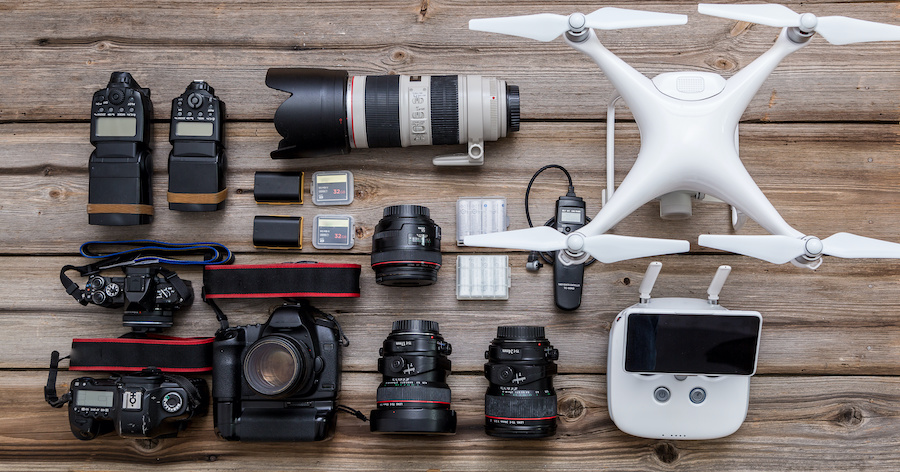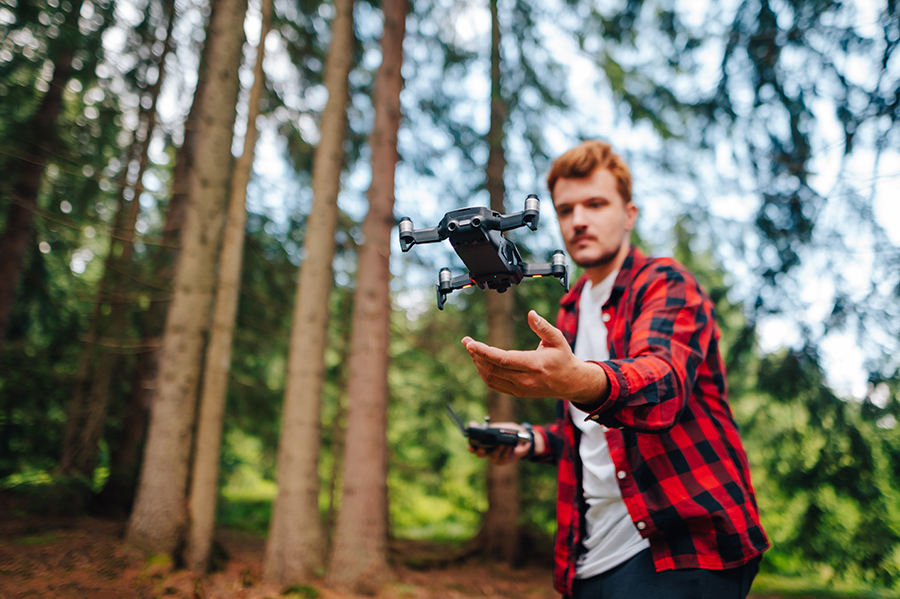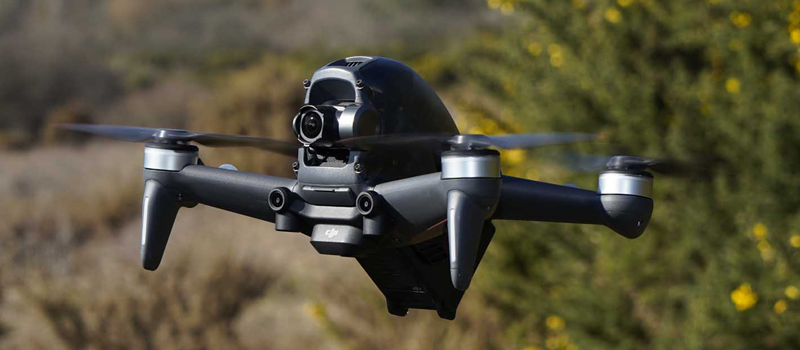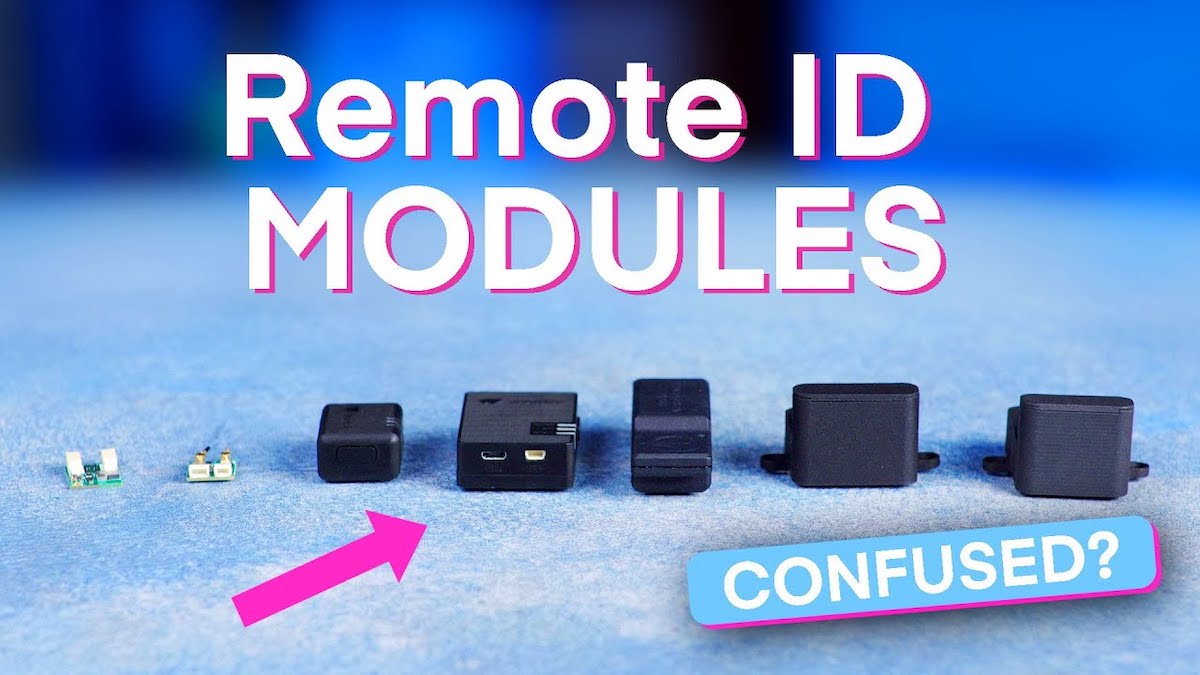As with any outdoor activity, a lot of things can go wrong whenever you fly your drone. You might find yourself battling against strong winds or flying under the harsh glare of the sun among a lot of other unpredictable outdoor factors. There are also potential hardware-related problems like depleted batteries or loose wiring in the drone.
The point we’re trying to make is that drone pilots need to be prepared whenever they go out to fly. To make sure that you can continue to fly no matter what happens, which equipment should you pack as part of your regular drone flight gear? Here are our top picks.
1. Carrying case or backpack
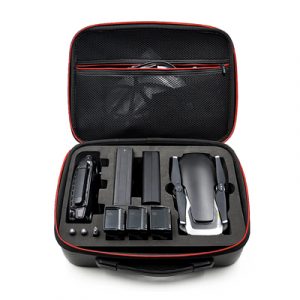 If you find yourself traveling frequently with your drone, then the first investment you need to make is on a high-quality carrying case, backpack, or flight bag for your drone. A good bag or case for your drone should come with a water-resistant and impact-resistant outer covering, customizable compartments for your accessories, and the durability and ergonomics fit for prolonged outdoor use.
If you find yourself traveling frequently with your drone, then the first investment you need to make is on a high-quality carrying case, backpack, or flight bag for your drone. A good bag or case for your drone should come with a water-resistant and impact-resistant outer covering, customizable compartments for your accessories, and the durability and ergonomics fit for prolonged outdoor use.
Choosing a specific bag or model will depend on the type of drone you have, how many accessories you need to bring, and your specific use case. Hard cases are recommended for particularly rugged trips or if you need 100% waterproofing. Backpacks are a better choice if mobility is important, such as if you need to bring the drone on a long hike. If it’s just simple convenience you’re after, then even a simple shoulder bag will provide ample protection and easy access to your hardware.
In any case, you will want to come up with a list of all drone accessories you plan to bring before you decide on a carrying case or bag for your drone. The best case or bag is one that is flexible, with removable and adjustable dividers that can accommodate a range of accessories while also giving them a snug fit.
2. Drone landing pad
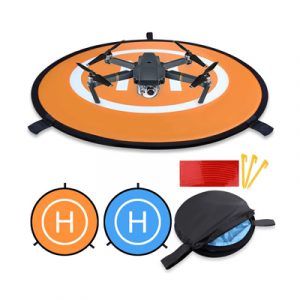 Out of all the components of a drone, its gimbal and camera setup is considered to be one of the most fragile while also being one of the most valuable. Just a few specks of dust can get into the small spaces of the gimbal and hinder its movement. Even worse, small particles can cause scratches in the lens of the camera. If you’re flying your drone to take photos or videos, then this would be a disaster.
Out of all the components of a drone, its gimbal and camera setup is considered to be one of the most fragile while also being one of the most valuable. Just a few specks of dust can get into the small spaces of the gimbal and hinder its movement. Even worse, small particles can cause scratches in the lens of the camera. If you’re flying your drone to take photos or videos, then this would be a disaster.
Kicking up dust is something that happens commonly while a drone takes off or lands. An easy way to avoid dust damage is by using a drone landing pad. The pad effectively creates a perfectly clean and flat surface for the drone to take off from and land on, so you never need to worry about dust, sand, uneven ground, or tall grass.
Drone landing pads are very cheap and can be folded down into a compact size. You can get a plain drone landing pad that can be secured to the ground with pegs or one that comes with LED lights in case you need to fly your drone at night.
3. Remote controller sunshade
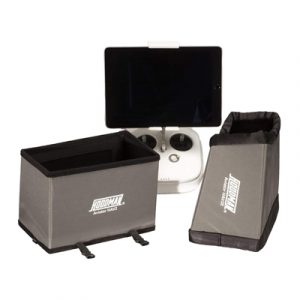 Although drone pilots are expected to keep their eyes on their drones at all times, it cannot be discounted that they will have to look down at their controllers to control basic camera functions, change flight modes, or check crucial telemetry data. Such advanced functions are typically navigable or viewable using the video display that is either integrated into the controller or by a tethered mobile device.
Although drone pilots are expected to keep their eyes on their drones at all times, it cannot be discounted that they will have to look down at their controllers to control basic camera functions, change flight modes, or check crucial telemetry data. Such advanced functions are typically navigable or viewable using the video display that is either integrated into the controller or by a tethered mobile device.
If you’ve ever tried using your phone under the sun (and who hasn’t?), then you can probably anticipate the problem with this approach. Under particularly sunny and bright conditions, the glare on your video display may simply get too bright for you to see anything.
A simple way to solve this problem is by using a sunshade. A sunshade can be hooked up to your controller or mobile device to eliminate glare and preserve visibility.
It may be a simple contraption, but most sunshades are made for specific mobile devices or remote controllers. To note a few examples, this sunshade for the iPad Air is not interchangeable with this sunshade for the DJI Mavic Air controller. This emphasizes the importance of knowing exactly which sunshade you need before you buy.
Other considerations in picking a sunshade are simple. Aside from providing complete glare protection, we recommend getting a sunshade that is lightweight and can be folded down for easy storage and portability.
4. Drone anti-collision lights
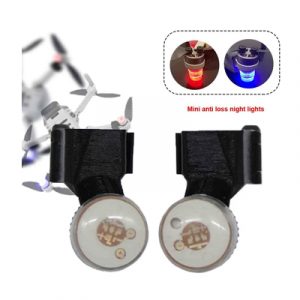 Whether you’re flying for fun or to earn money, it’s always worth the effort to prepare to continue flying well into the night. Flying a drone at night is great fun, but there’s no question that the drop in visibility at night introduces new hazards.
Whether you’re flying for fun or to earn money, it’s always worth the effort to prepare to continue flying well into the night. Flying a drone at night is great fun, but there’s no question that the drop in visibility at night introduces new hazards.
For this reason, it’s a good idea to have anti-collision lights installed in your drone. These lightweight strobe lights allow you to see where the drone is even in the darkness of night. There are also colored versions of drone night lights that allow you to determine the drone’s attitude and direction of flight.
The use of anti-collision light isn’t just a great idea – it’s required by law. Whether for recreational or commercial drone flight, the FAA requires drones that fly at night to have anti-collision lights that make them visible up to a distance of three statute miles. Part 107-licensed drone pilots also need to secure a waiver for night flight from the FAA before they are allowed to legally fly a drone at night.
Changes seem to be underway to give more leeway for professional drone pilots to fly at night, but we’re pretty sure that the requirement for anti-collision lights will still be there. In any case, they are an inexpensive, lightweight, non-intrusive addition to your drone.
5. Hardhat and safety vest
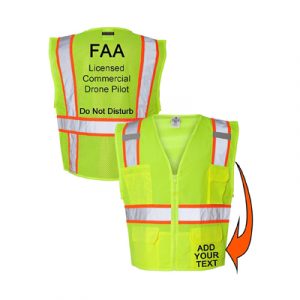 Safety and security are two sensitive topics when it comes to drone flight. Despite drones becoming more mainstream in the last few years, a lot of people are still wary about the idea of having drones flying near or above them.
Safety and security are two sensitive topics when it comes to drone flight. Despite drones becoming more mainstream in the last few years, a lot of people are still wary about the idea of having drones flying near or above them.
A simple way to ease the minds of the people around you is by wearing a standard safety vest. Not only does a vest create an air of legitimacy, but it also makes you easily identifiable and accountable should there be any concerns about the drone operations. This lime green safety vest even identifies you as an FAA-licensed commercial pilot while also discouraging bystanders from disturbing you unless necessary.
As the drone pilot, you must also consider protecting yourself from the inherent danger of falling objects. A standard hard hat is enough to serve this purpose. Paired with the safety vest, this whole ensemble has proven to be quite effective in convincing people that you know what you’re doing.
6. Propeller guards
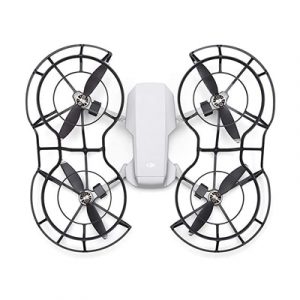 Of all the components of a drone, it is its propellers that often take the heavy brunt of a crash. Propellers are naturally pliable and lightweight. These characteristics may help them generate lift and remain aerodynamic, but it also means that they can easily get chipped, cracked, or bent out of shape.
Of all the components of a drone, it is its propellers that often take the heavy brunt of a crash. Propellers are naturally pliable and lightweight. These characteristics may help them generate lift and remain aerodynamic, but it also means that they can easily get chipped, cracked, or bent out of shape.
While propeller damage is not absolutely avoidable, you can reduce the chances of it happening by installing propeller guards. These are lightweight add-ons that clip to the body of drones or provide a mechanical barrier between the propellers and anything in the drone’s surroundings. Aside from protecting the propellers from damage, they can also help prevent injury should a drone crash or fly near a person.
Propeller guards are almost always unique to the drone, although third-party options are always available. The typical argument against propeller guards is that they don’t look cool – and we agree that they diminish the aesthetic value of drones. However, the added safety they provide is more valuable than a drone’s visual appeal.
7. Li-Po bags
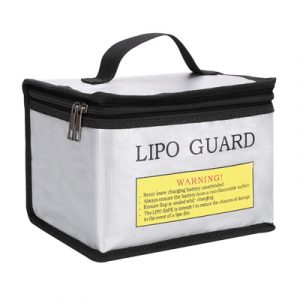 The development of Li-Po batteries has proven to be one of the key reasons why drones have become a lot more popular. Since Li-Po batteries can pack a lot of capacity in a lightweight and compact structure, they have given way to more battery-efficient and practical drone models.
The development of Li-Po batteries has proven to be one of the key reasons why drones have become a lot more popular. Since Li-Po batteries can pack a lot of capacity in a lightweight and compact structure, they have given way to more battery-efficient and practical drone models.
However, Li-Po battery technology is not without glaring flaws. The proximity of the electrodes to each other and the lack of rigidity makes Li-Po batteries prone to overheating, combusting, and exploding. Although the safety of Li-Po batteries has massively improved over the years, taking a good deal of precaution is still necessary.
The first line of defense against battery-related fires is a specially designed Li-Po bag. Made of fireproof material, Li-Po bags are meant to contain any fires should a Li-Po battery in storage go up in flames or explode. While it does not prevent any battery-related accidents, it can at least avoid the flame from causing collateral damage.
If you’re planning to travel in an airplane your drone, your airline may require that all Li-Po bags be stored and transported inside a proper Li-Po bag. Some drone pilots have also adopted the practice of keeping the batteries inside the Li-Po bag while they are being charged.
It’s practically a given that spare batteries should be part of any drone pilot’s arsenal of equipment. If you’re going out on operations with multiple spare batteries, it would be a good idea to store them separately so they don’t all get damaged if one fails. You can buy small Li-Po bags for individual storage and a bigger one with a handle for more convenient transportation.
8. Charging cables and power bank
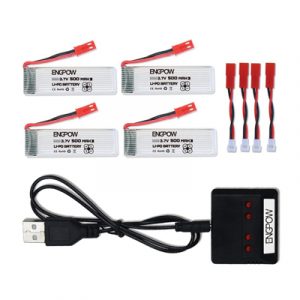 Even if you have several spare batteries for your drone, keeping the drone powered up is only a part of the overall operations. There’s still the remote controller, your smartphone, plus any other mobile device that you use as a visual display for FPV flight.
Even if you have several spare batteries for your drone, keeping the drone powered up is only a part of the overall operations. There’s still the remote controller, your smartphone, plus any other mobile device that you use as a visual display for FPV flight.
For this reason, it’s always a good idea to have a backup portable power source to charge all your devices. You will need something with a suitably high capacity, such as this power bank from Anker. Make sure to pack all the charging cables you need for your devices, as well as a battery charger if you use rechargeable batteries.
A power bank can also be used to charge your drone batteries in a pinch. You can either use generic Li-Po battery chargers or the ones that are specially designed for your specific drone model. The latter option is recommended if you use drones from major brands like DJI, Parrot, or Yuneec.
9. Extra SD cards
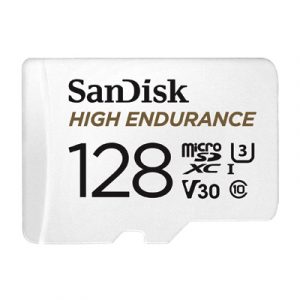 If you do any sort of commercial drone work or if you tend to take a lot of aerial photos and videos, then you probably know that you can never have enough storage. A 128 GB SD card can only fit around 200 minutes of 4K videos – not nearly enough if you’re planning on shooting for an entire day.
If you do any sort of commercial drone work or if you tend to take a lot of aerial photos and videos, then you probably know that you can never have enough storage. A 128 GB SD card can only fit around 200 minutes of 4K videos – not nearly enough if you’re planning on shooting for an entire day.
For this reason, it will always be a good idea to have a handful of extra SD cards ready to go. The good news is there are now a lot of SD card products that were designed to withstand rugged conditions. Get SD cards that are heat-stable, waterproof, and shockproof. They may be a little expensive, but it would be heartbreaking to lose all those photos and videos just because of corrupted data storage.
10. Repair kit
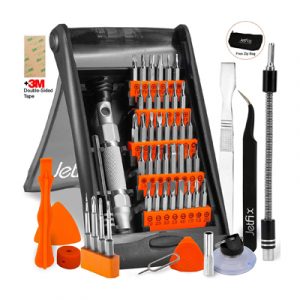 Arguably one of the most important things you should have is a repair kit. With so many things that can go wrong when you’re out in the field, you should have the tools to step in at any point and make minor repairs. This can range from tightening of a few screws and reconnecting of loose wires to plain old duct-taping of parts together just to be able to take off
Arguably one of the most important things you should have is a repair kit. With so many things that can go wrong when you’re out in the field, you should have the tools to step in at any point and make minor repairs. This can range from tightening of a few screws and reconnecting of loose wires to plain old duct-taping of parts together just to be able to take off
You don’t have to bring an entire toolbox to the field. Since drone parts are small, you need a toolkit that also of appropriate size. This screwdriver kit from Jetfix is a good option, but any toolkit from a reputable brand that is designed for small electronics should be fit for the job. Look for something compact and has a good selection of different screw heads. Throw in a roll of electrical tape there for good measure.
Just keep in mind that an emergency is the worst time to learn how to use your tools. Try to use your toolkit when tweaking with your drone at home so that you’ll know exactly which tool to reach out for when things get rough.
Final thoughts
There are so many unpredictable factors to consider whenever you go out to fly with your drone. There’s the weather, the presence of other manned aircraft, or the behavior of people on the ground. Things can and eventually will go wrong. What is predictable, however, are the measures you can take to prepare for these unfortunate events.
Take note that we have listed here are only the equipment that you can get to help avert accidents. There are also a couple of standard practices you can do to avoid getting into trouble. You can apply for waivers if needed, check for METAR weather reports, or check if there is active TFR in your area of operations. This is all part and parcel of being a responsible drone pilot.
Note: Pilot Institute is part of the Amazon Associates program. We may earn a commission on sales, although this does not increase the cost for you.
